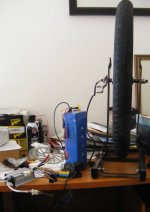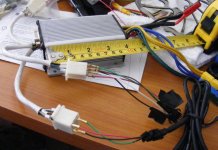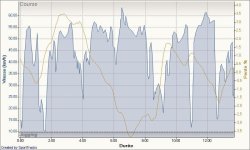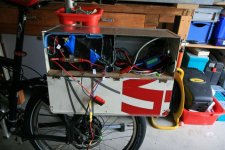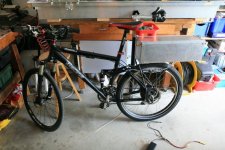dirtdad
1 kW
- Joined
- Mar 2, 2008
- Messages
- 309
The new 1000W BMC hub motor (V3) has proven to have a lot of potential that we (BMC and retailers) cannot figure out how to unleash...yet anyway.
We have tested with the Crystalyte 20 and 40A controllers with disappointing results. Speeds in the low 20s even at 72V, and controllers that heat up very fast. Soft start and current limiting help with overheating. I dont understand it, but BMC and others think the motors low resistance may cause the controllers to be heating up. I thought high resistance would result in heat...but there is more going on in this case with PWM and all.
This evening I just tested with the 72V 65A Infineon controller (18 beautiful 4310 fets). Good news and bad news. This controller definitely unleashed the motor - for about 1/4 mile. When I say unleashed, I mean un-freaking-leashed. At partial throttle I was accelerating HARD at 40mph before I let up because it was dark out and I had no lights except to read my speed. Under those conditions and in that short a distance the phase wires got very warm. And then the controller threw the thermal breaker. After letting is sit for a few minutes it was operating again.
The Infineon uses a high clock speed processor, we think this may be key to getting it to drive the V3 to is full potential. I dont know how it compares to the Crystalyte controller in that regard. Calling Knuckles... The Infineon does not appear to be the solution for now, but I think it does help us figure this out.
I dont know if the Infineon I used has soft start or not. It is the latest and greatest from Keywin. They used to have soft start. If it does, it is not soft enough. The best modulation I could muster with micrometer throttle movement resulted in 3 modes - nothing, a very light output, and BANG, afterburner kick in the pants, after which you still had 95% of the throttle left and no sign of let up in power as you turned the throttle. Not a good throttle curve to say the least. I am afraid I will toast a clutch like this. During the 1/4 mile I got it to work, it put the X5 motor to shame. I mean like not even close. I will try a 36V Infineon next.
Bottom line: this motor is a beast that we have yet to tame, but its potential seems enormous. A couple of us will be testing with the Kelly 120A (peak) 50A sustained controller next, and BMC is working on their own controller.
We have tested with the Crystalyte 20 and 40A controllers with disappointing results. Speeds in the low 20s even at 72V, and controllers that heat up very fast. Soft start and current limiting help with overheating. I dont understand it, but BMC and others think the motors low resistance may cause the controllers to be heating up. I thought high resistance would result in heat...but there is more going on in this case with PWM and all.
This evening I just tested with the 72V 65A Infineon controller (18 beautiful 4310 fets). Good news and bad news. This controller definitely unleashed the motor - for about 1/4 mile. When I say unleashed, I mean un-freaking-leashed. At partial throttle I was accelerating HARD at 40mph before I let up because it was dark out and I had no lights except to read my speed. Under those conditions and in that short a distance the phase wires got very warm. And then the controller threw the thermal breaker. After letting is sit for a few minutes it was operating again.
The Infineon uses a high clock speed processor, we think this may be key to getting it to drive the V3 to is full potential. I dont know how it compares to the Crystalyte controller in that regard. Calling Knuckles... The Infineon does not appear to be the solution for now, but I think it does help us figure this out.
I dont know if the Infineon I used has soft start or not. It is the latest and greatest from Keywin. They used to have soft start. If it does, it is not soft enough. The best modulation I could muster with micrometer throttle movement resulted in 3 modes - nothing, a very light output, and BANG, afterburner kick in the pants, after which you still had 95% of the throttle left and no sign of let up in power as you turned the throttle. Not a good throttle curve to say the least. I am afraid I will toast a clutch like this. During the 1/4 mile I got it to work, it put the X5 motor to shame. I mean like not even close. I will try a 36V Infineon next.
Bottom line: this motor is a beast that we have yet to tame, but its potential seems enormous. A couple of us will be testing with the Kelly 120A (peak) 50A sustained controller next, and BMC is working on their own controller.


